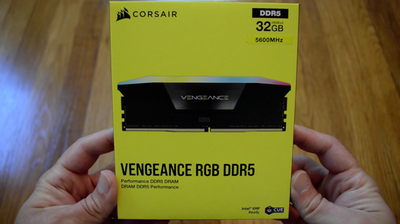
Experimenting with Corsair's VENGEANCE RGB DDR5 32GB RAM (2024)
My thoughts on the CORSAIR VENGEANCE RGB DDR5 32GB: performance, overclocking, RGB customization, and system compatibility.
Introduction
I recently upgraded my computer with the CORSAIR VENGEANCE RGB DDR5 32GB memory kit and decided to share my experience. As a tech enthusiast, I was looking forward to seeing how this new DDR5 kit would perform compared to my older DDR4 setup. I'll go over the benefits and challenges I encountered, from speed and performance to system integration.
Some photos (click to enlarge)
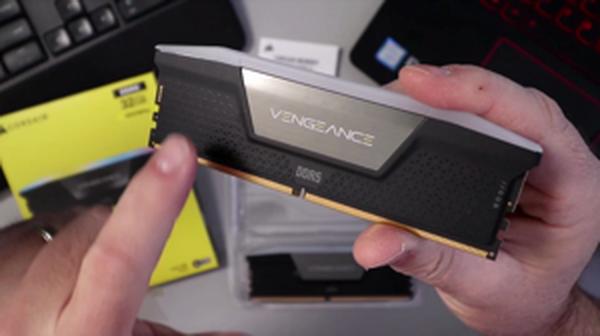

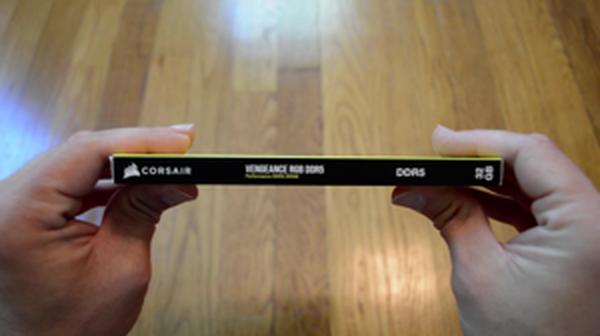
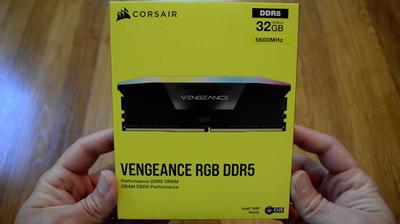
Specs of the CORSAIR VENGEANCE RGB DDR5 32GB
- Release Year
- Brand
- Compatible Devices
- Computer Memory Size
- Memory Speed
- Ram Memory Technology
Prices
Performance and Stability in Real-World Use
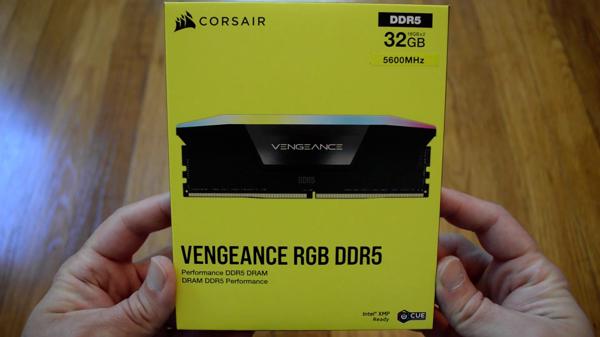
When I first installed the CORSAIR VENGEANCE RGB DDR5 32GB kit, I was excited about the prospect of harnessing DDR5 speeds in my rig, which was built around an Intel chipset touted for its DDR5 compatibility. With the sleek RGB and promised performance, expectations were high.
Here's a quick rundown of my experiences:
Speed and Performance: Right off the bat, the difference in processing and rendering tasks was noticeable. Jumping from DDR4 to DDR5 felt like a significant upgrade, with applications loading faster and multitasking becoming smoother.
Stability: While the speed was a breath of fresh air, I did experience some initial instability. I encountered the dreaded blue screen a couple of times when pushing the RAM to its advertised speeds with XMP enabled.
Heat: Another concern was the heat. The modules ran hotter than I anticipated, which is something to keep an eye on, especially if you're pushing your system hard.
That said, despite these speed bumps, the performance gains in everyday tasks and especially during gaming sessions were undeniable. Editing videos and 3D rendering were smoother, and with adjustments, the stability issues were ironed out. Sure, it wasn't as simple as plug and play at first — tweaking in the BIOS was essential to find the sweet spot between performance gains and system stability.
While there's no denying the allure of the RGB lighting and the customization it offers, it detracts from the main purpose of RAM — to provide reliable and fast memory access. Thankfully, with a bit of patience and BIOS adjustments, the RAM did end up being stable enough for daily use.
It's important to note, however, that the memory's performance is heavily dependent on motherboard compatibility and BIOS support. Before purchasing, I did my due diligence on compatibility, but even then, it seems like system setups can be a bit of a gamble on the cutting edge of technology.
In summary, while the CORSAIR VENGEANCE RGB DDR5 32GB modules offer a tantalizing glimpse into the future of memory with their stellar speed and crisp RGB lighting, the road to stable and consistent performance can have a few potholes. End users will likely need to balance the allure of high-speed RAM with the potential need for troubleshooting and tweaking, especially in the early days of the DDR5 era. A BIOS update could smooth out these wrinkles, but for now, I appreciate that even within these early adoption pains, the gains are substantial enough to be worth it for tech enthusiasts like myself.
Overclocking Potential with Onboard Voltage Regulation

In the realm of PC building, tweaking your components to squeeze out maximum performance is almost like a rite of passage. With the CORSAIR VENGEANCE RGB DDR5 32GB, there's a notable overclocking potential, thanks mainly to onboard voltage regulation. This compelling feature allows for more stable and fine-tuned overclocking compared to older generations that relied on motherboard controls. However, as with all overclocking adventures, it comes with its caveats—potential instability and warranty concerns. So, here's my take on it:
Pros:
Easier and more precise overclocking thanks to onboard voltage regulation.
Likely higher stable overclocks due to tightly screened ICs.
Cons:
Overclocking can potentially lead to instability issues.
Might void the warranty or reduce the lifespan of the modules.
I've found that using CORSAIR’s iCUE software, tuning the RAM to my preferred settings is relatively seamless. And while I haven’t pushed my modules to their absolute limits — a mix of caution and satisfaction with the already stellar performance — the headroom is definitely there.
Onboard voltage regulation not only simplifies the overclocking process but also ensures that the memory operates smoothly once you've dialed in your preferred settings. The stability it offers can’t be overstated; stable voltage is a cornerstone for any form of system tuning, especially when dealing with the finickiness of memory chips running at high frequencies.
While the iCUE interface makes overclocking more accessible, it’s not without its quirks. Occasionally, the software and the memory aren’t on the same page, necessitating a reboot or re-tweaking settings. However, these hiccups haven't dampened the overall positive experience I've had with the kit.
But what’s performance without reliability? Diving into forums, I've noticed some users have reported issues with stability when pushing their RAM beyond the XMP profiles. While I haven’t experienced such bluescreens of disappointment myself, it’s something to keep in mind when considering how far to push your system.
In conclusion, for those looking to embark on an overclocking journey, the CORSAIR VENGEANCE RGB DDR5 makes a strong case for itself. It offers the tools for stable and controlled tweaking; however, it’s not a foolproof venture — as with all overclocking, there's always a small risk. For me, the potential performance gains are worth the calculated risk, especially when backed by sophisticated features like onboard voltage regulation and a robust software suite from a reputable brand.
RGB Lighting Aesthetics and Customization

When it comes to RGB lighting in PC components, the aesthetic appeal is undeniable. The CORSAIR VENGEANCE RGB DDR5 memory kit isn't just about the performance boost – it's a visual feast too. With the dynamic Ten-Zone RGB Lighting, each module comes alive with a spectrum of colors that can be controlled and synchronized using CORSAIR iCUE software. This isn't just a couple of LEDs slapped onto a RAM stick; we're talking about ten individually addressable LEDs per module.
Here's a quick rundown of my thoughts on the RGB aspect:
Pros:
The vividness of the colors is impressive, and the options for customization are plentiful.
The panoramic light bar design ensures a 360-degree lighting effect that's visible from any angle.
Integrating with the iCUE software opens up a world of possibilities for syncing with other CORSAIR products.
Cons:
The iCUE software, while powerful, can be a bit finicky and sometimes doesn't play well with other RGB software like ASUS AURA Sync.
Those not using RGB may feel they're paying extra for a feature they don't utilize.
Getting the RGB just right can be a bit of trial and error, especially when aiming for a theme or coordinating with other components in my rig. Still, once dialed in, it's a game-changer—transforming the look of my workspace and adding an immersive element to gaming sessions.
However, not all's perfect in RGB land. Despite the allure, there's always the concern about software reliability. iCUE is feature-rich, but sometimes, it refuses to recognize the sticks, leaving me to troubleshoot when I'd rather be enjoying the light show. Also, for users who prefer a minimalist setup without the RGB pizzazz, it might seem like overkill – both in terms of design and cost.
In terms of installation, it's pretty straightforward – slot these beauties in, and they shine up nicely. But take heed if you're a perfectionist: ensuring color synchronization across all your peripherals can be time-consuming. The iCUE software can help, offering complete control over lighting effects and color schemes, whether you want a subtle glow or a full-on disco in your case.
Wrapping up, while RGB might not directly contribute to performance metrics, it certainly plays a pivotal role in the overall PC build experience. It's about striking that right balance between looking great and functioning seamlessly. The CORSAIR VENGEANCE RGB DDR5's lighting is, for me, the cherry on top of a performance-laden cake - a confluence of speed and style. Sure, there might be a hiccup or two along the way, but when it all comes together, it's nothing short of stunning.
Compatibility and System Integration

In wrapping up this review, a vital aspect to touch upon is compatibility and system integration with the CORSAIR VENGEANCE RGB DDR5 32GB memory kit, particularly since it targets the latest Intel motherboards. As a tech enthusiast who's seen his fair share of incompatibility headaches, this aspect is not to be taken lightly.
Corsair is known for producing memory that plays well with a wide range of motherboards, and my experience with Vengeance RGB DDR5 indeed held up to this expectation. Ensuring XMP profiles are optimized for Intel’s latest chipset made integration a breeze. However, I did notice that motherboards not on Corsair's QVL (Qualified Vendor List) might need extra steps for these RAM sticks to perform at their best.
Here’s a quick rundown of my thoughts:
Compatibility Check: Always ensure your motherboard is on the QVL for a painless experience.
System Sync: Pairing with an Intel board? You’re likely in for smooth sailing, particularly with XMP profiles.
Ryzen Pairing: If you’re team AMD, look out for the AMD Expo variant of this memory for optimal performance.
Software Sync: Using iCUE? Great for Intel setups, but mixing with other RGB software can be quirky.
Though this memory is primarily marketed for Intel platforms, users of AMD systems might feel a tad left out. But it's not a deal-breaker; while there is an AMD-optimized variant available, ensuring you're picking the right model could lead to better synergy with AMD's ecosystem.
On the downside, while iCUE gives great control over lighting and advanced features, it can be a weak link when paired with other RGB software like ASUS AURA Sync. Also, mixing different batches or brands can sometimes lead to instability, as compatibility isn't always guaranteed. This is a universal truth in the DIY PC world, but it's worth explicitly stating.
It's essential to note that just because the RAM lists impressive speeds and capacities doesn’t mean you’ll plug it in and instantly hit those numbers—ensuring motherboard compatibility, tweaking BIOS settings, and possible software updates are all part of the process. On enthusiast forums like MacRumors, I've seen many suggest that checking motherboard manuals and QVLs is crucial, and I couldn't agree more.
It's a little give and take; the CORSAIR VENGEANCE RGB DDR5 shines with the right setup but requires conscientiousness when integrating into your system. You need to be ready for a bit of troubleshooting if your build strays from the beaten path. When it all comes together, though, you're looking at a performance lift that's very much worth the elbow grease. And honestly, that kind of fine-tuning is part of the charm of PC building.
To sum it up, having patience and due diligence can save you from the common pitfalls of building—making this memory kit a robust choice that could light up both your system's performance and aesthetics.
Comments (0)
Share